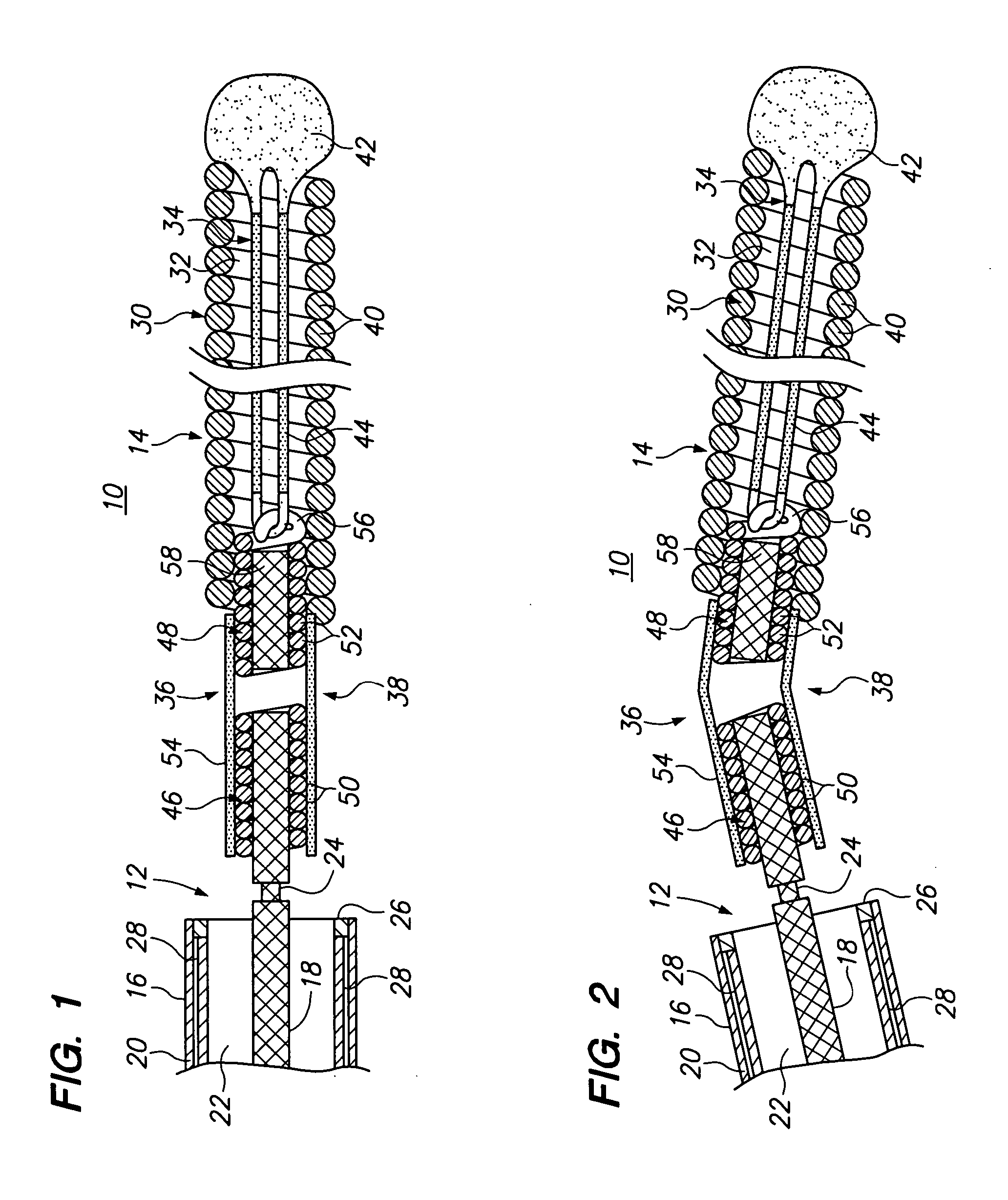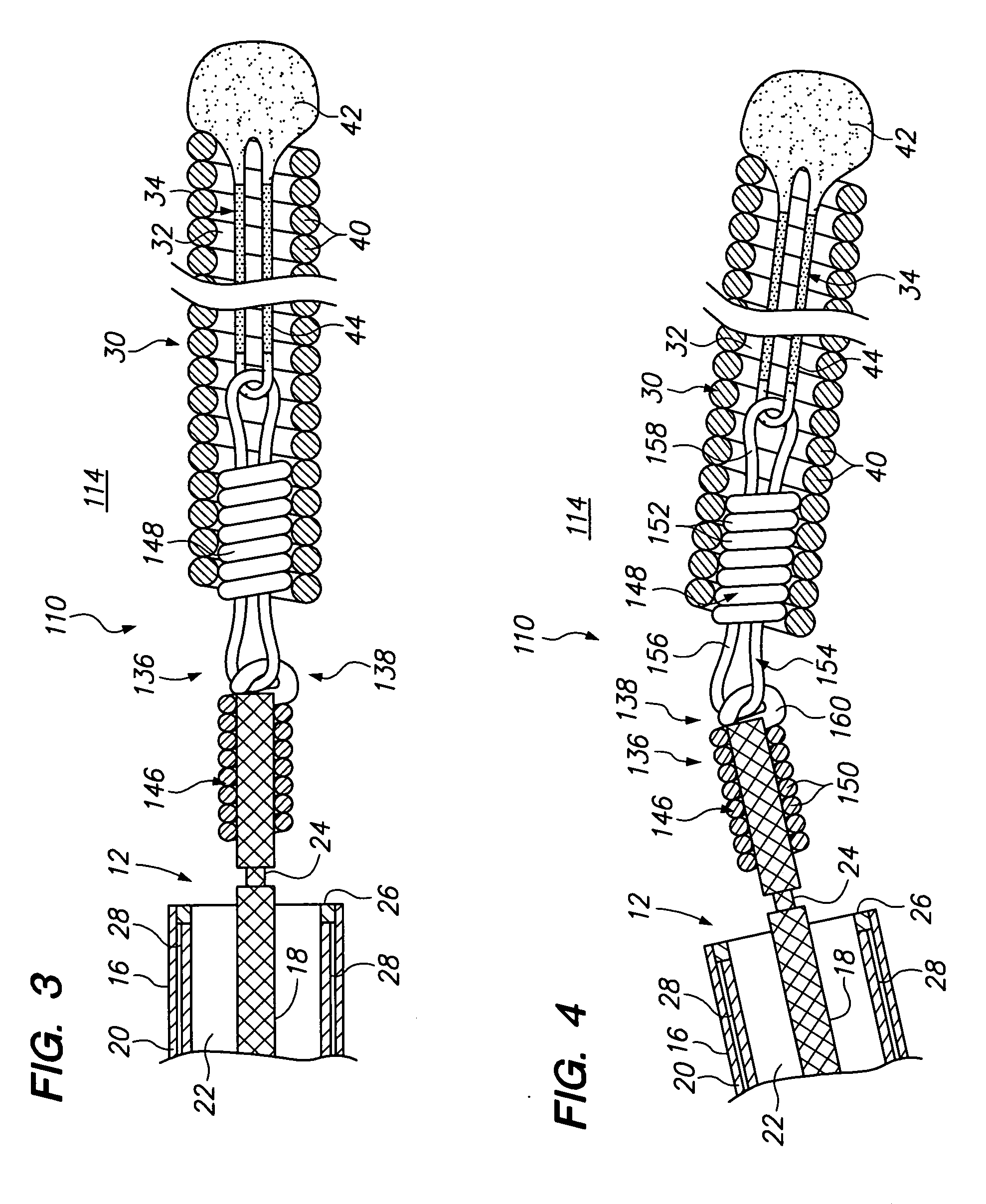Vaso-occlusive device having pivotable coupling
a vasoocclusive device and pivoting technology, applied in the field of assembly for implanting vasoocclusive devices, can solve the problem of unsatisfactory extension of the duration of the procedur
- Summary
- Abstract
- Description
- Claims
- Application Information
AI Technical Summary
Benefits of technology
Problems solved by technology
Method used
Image
Examples
Embodiment Construction
[0027] Referring to FIG. 1, a vaso-occlusive assembly 10 constructed in accordance with a preferred embodiment is illustrated. For purposes of orientation, the term “proximal“as it qualifies an element generally refers to the left end of the element, and the term “right” as it refers to an element generally refers to the right end of the element, as shown in the figures. The vaso-occlusive assembly 10 generally comprises a delivery device 12, which includes an elongated tubular catheter 16 and a pusher member 18, and a vaso-occlusive device 14 detachably associated with the distal end of the delivery device 12, and in particular, the distal end of the pusher member 18.
[0028] The catheter 16 comprises an elongated tubular member 20 having a delivery lumen 22 in which the pusher member 18, and thus, the vaso-occlusive device 14, is slidably disposed. The tubular member 20 can be composed of any suitable flexible and biocompatible material that allows it to be introduced through the t...
PUM
 Login to View More
Login to View More Abstract
Description
Claims
Application Information
 Login to View More
Login to View More - R&D
- Intellectual Property
- Life Sciences
- Materials
- Tech Scout
- Unparalleled Data Quality
- Higher Quality Content
- 60% Fewer Hallucinations
Browse by: Latest US Patents, China's latest patents, Technical Efficacy Thesaurus, Application Domain, Technology Topic, Popular Technical Reports.
© 2025 PatSnap. All rights reserved.Legal|Privacy policy|Modern Slavery Act Transparency Statement|Sitemap|About US| Contact US: help@patsnap.com



